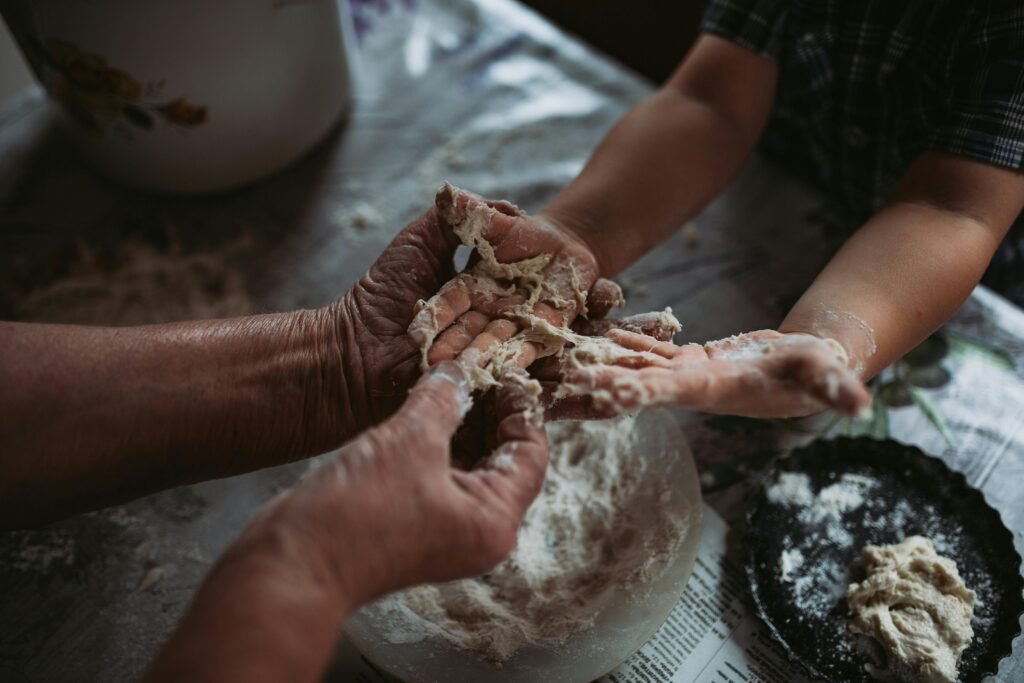Making the Dough: Step-by-Step Guide

Ingredients You’ll Need
- Prepared levain (must have passed the float test)
- Flour
- Water (lukewarm, 24–27°C / 75–80°F)
- Salt
Tip: Water temperature may vary slightly depending on your environment and flour type.
Step 1: Mix Flour and Water (Autolyse)
- In a large bowl, combine the flour and water.
- Mix until no dry flour remains. The mixture should be shaggy but homogeneous.
- Cover the bowl with a damp cloth or plastic wrap and let it rest for 20 minutes to several hours.
Why autolyse matters:
- Hydrates the flour for better gluten formation.
- Starts enzymatic activity, breaking starches into sugars for the levain.
- Makes the dough easier to handle and improves texture and volume in your bread.
Step 2: Add Levain and Salt
- After autolyse, add your active levain. Mix thoroughly to evenly distribute.
- Sprinkle salt evenly over the dough and mix again.
What’s happening:
- Levain introduces wild yeast and bacteria to ferment the dough.
- Salt:
- Enhances flavor
- Strengthens gluten for elasticity
- Regulates yeast activity for a controlled rise
Key Factors for Dough Success
- Temperature: Warmer dough = faster fermentation; cooler dough = slower rise.
- Hydration: Higher water content = open crumb and crisp crust, but harder to handle. Adjust according to flour type.
- Mixing:
- Undermixed → uneven fermentation, dense bread
- Overmixed → tough dough
Pro Tip: Properly executed mixing and autolyse set the foundation for fermentation, shaping, and baking. Don’t rush this step—your final bread will thank you!